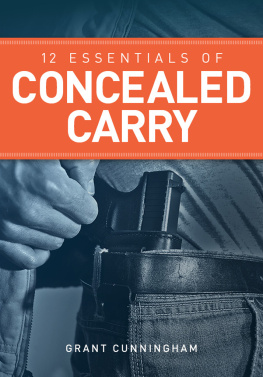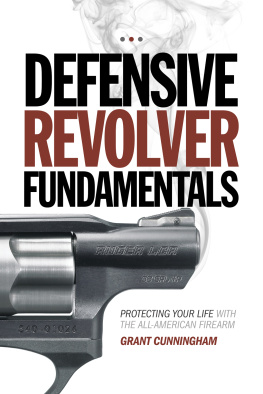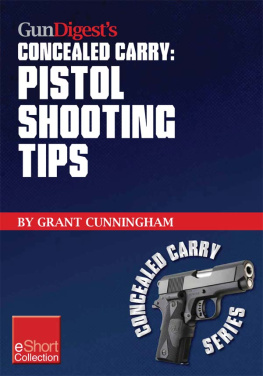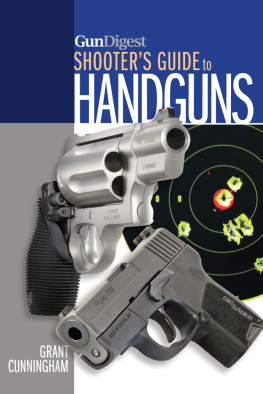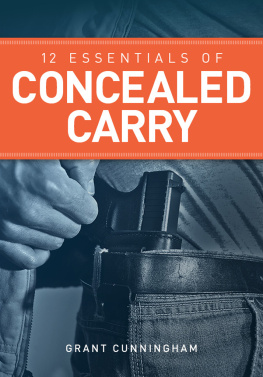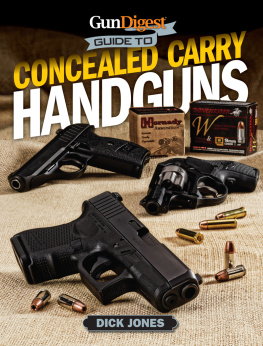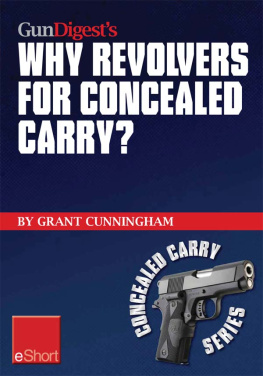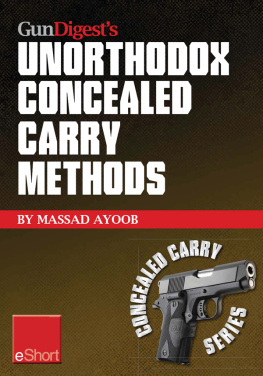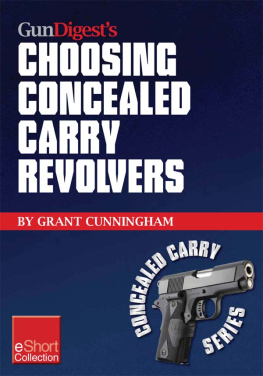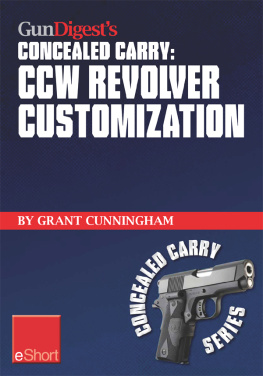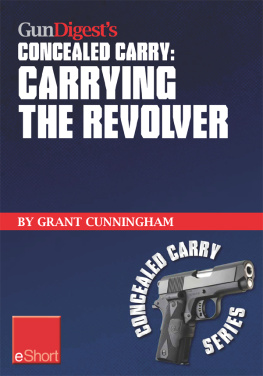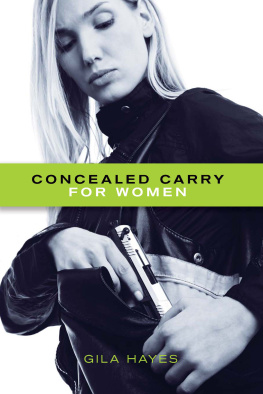Thank you for purchasing this Gun Digest eBook.
Sign up for our newsletter and receive special offers, access to free content, and information on the latest new releases and must-have firearms resources! Plus, receive a coupon code to use on your first purchase from GunDigestStore.com for signing up.
or visit us online to sign up at
http://gundigest.com/ebook-promo
Introduction
Congratulations on choosing to join the ranks of the self-sufficient: those people who understand that the police cant always be there to actually keep you from being harmed. Carrying a firearm for self defense is the ultimate expression of your resolve to not be a victim, to take charge of your own safety and declare to yourself that you are worth protecting.
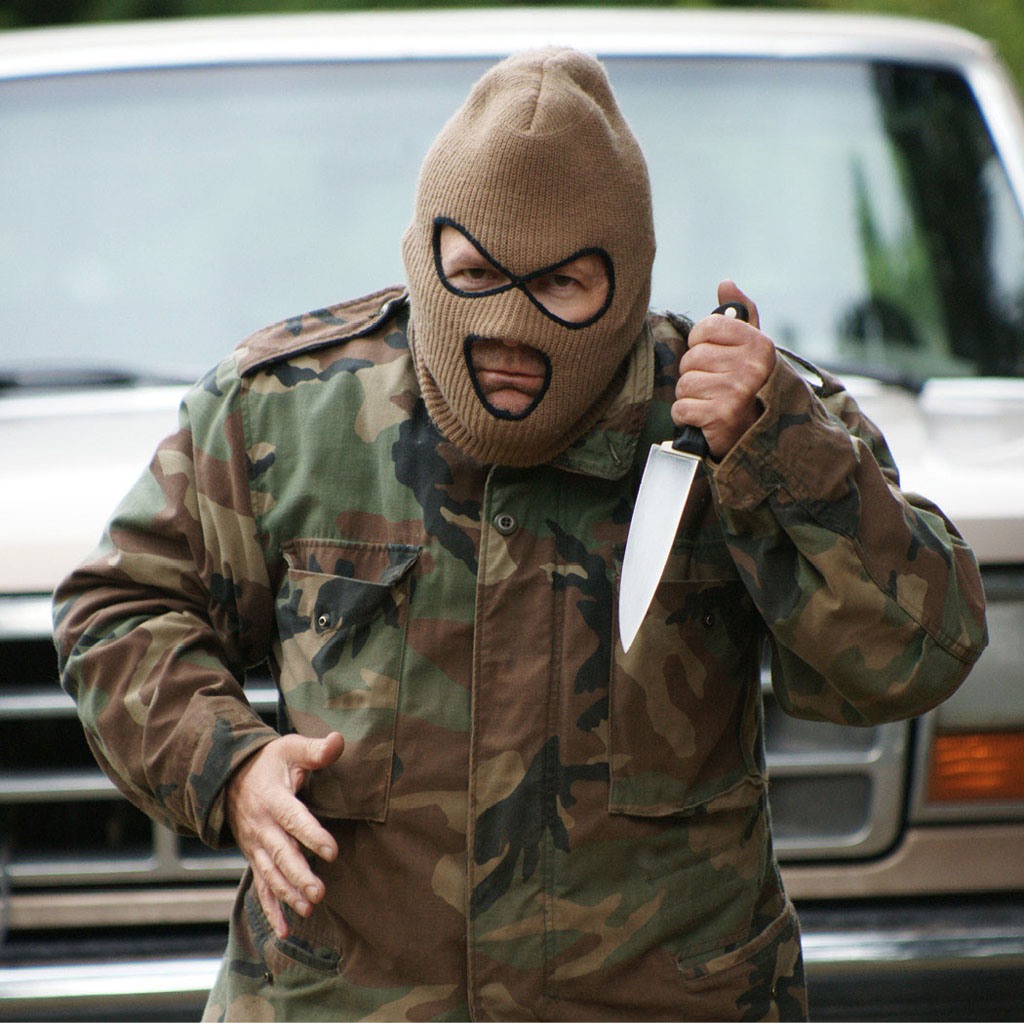
In the rare case that you might be attacked and your life, or the life of another, is in danger, youll want to be prepared to defend yourself with deadly force if necessary.
The right to carry a firearm, enshrined as it is in our Constitution, is really an acknowledgement that each individual has the right to keep himself or herself from harm, regardless of the source of that harm. The personal firearm, the individual armament, is the most efficient way in which we achieve that end.
Along with the right to carry a firearm, however, comes a responsibility to do so safely, sanely and in accordance with the law. The world of concealed carry is sometimes confusing and frightening, and I hope this book will help you in your quest to be a self-sufficient individual.
Safety First!
Firearms are dangerous things - thats why we use them to protect ourselves and our loved ones. It is precisely because of the danger they pose that they make good tools to stop bad people from doing bad things to good people. That is, if theyre used properly.
Used improperly they present a danger to their user or to innocent people. Thats not what we as conscientious, competent, law-abiding gun owners wish to have happen and why we approach all handling of firearms with safety first and foremost in our minds.
Guns always pose the same amount of danger, but the risk of that danger affecting us changes. We make that change in risk happen with safety rules and procedures. Those rules and procedures ensure that the benefit of handling or using the gun outweighs the risk.
For instance, shooting a handgun makes an extremely loud sound and poses a very real danger to your hearing. You reduce the chances of that happening - your risk - by wearing good hearing protection. By doing so you will reduce the risk to well below the benefit youll get from shooting that gun, whether that benefit is simply recreational or preparation for saving your life.
For any drill that you do, or any class that you take, the benefit of doing or taking has to outweigh the risk involved.
Whether Im teaching a class or simply handling a gun, I reduce the risk to myself and the people around me by following, and making sure everyone else follows, these easy-to-remember rules:
Always keep the muzzle pointed in a generally safe direction.(A generally safe direction is one where, should the gun inadvertently discharge, it will not hurt you or anyone else. This changes from environment to environment, and requires that you always think about the safe direction.)
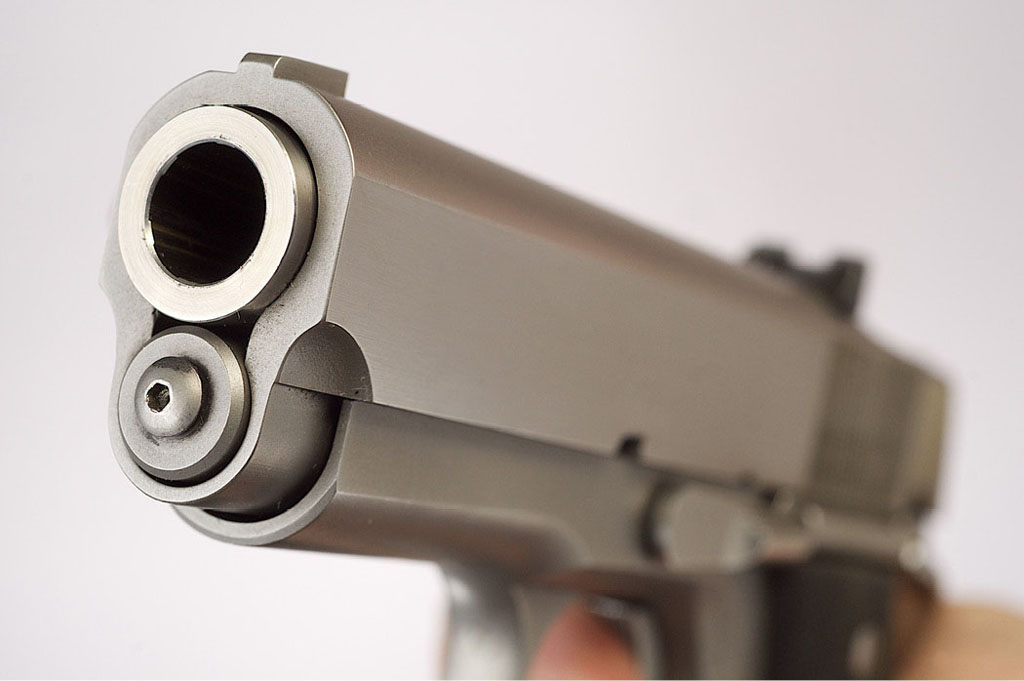
The first rule is to keep the muzzle - the part of the barrel where the bullets exit - pointed in a generally safe direction.
Always keep your trigger finger outside of the trigger guard until you are actually in the act of firing.
(The preferred place is straight along the frame above the trigger.)
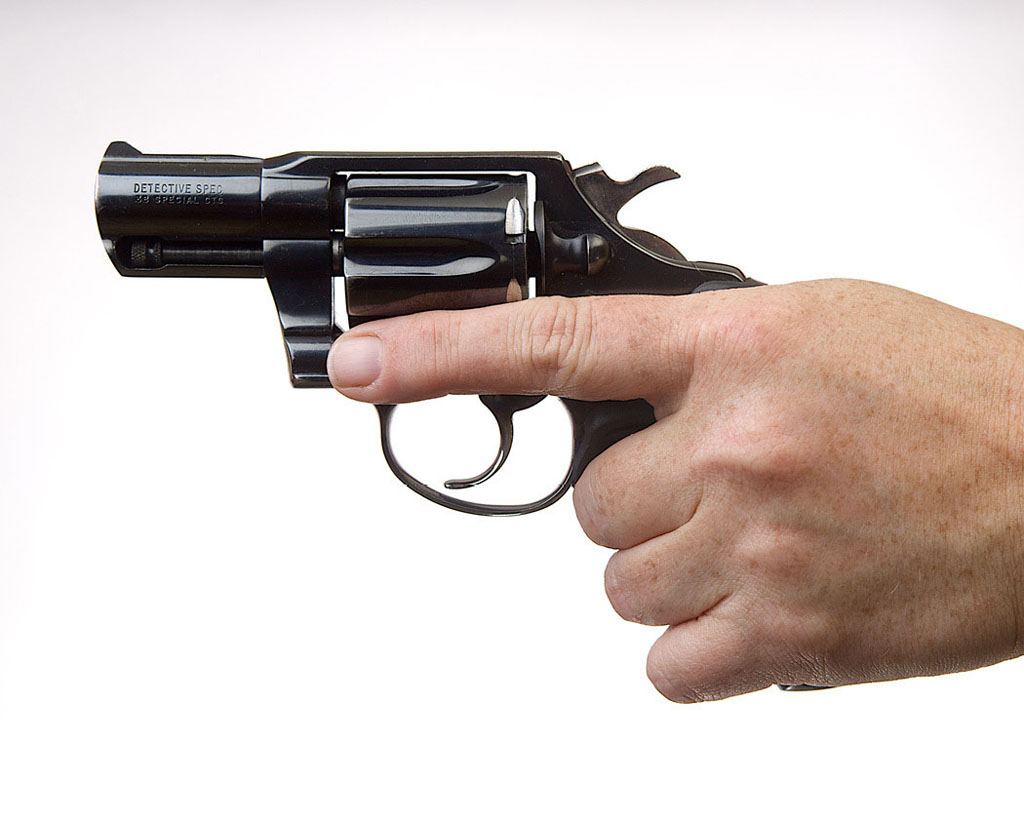
Always keep your finger outside of the trigger guard, extended on the frame of the gun, until youre ready to shoot.
Always remember that you are in control of a device that, if used negligently or maliciously, can injure or kill you or someone else.
(This means that you must always think about what your target is, where your bullets will land, and all the other things that could result in your gun causing human suffering.)
Safety is your most important responsibility. Whenever you pick up a gun, think about what youre doing and why. Reduce your risk, and help those around you reduce theirs by teaching them these rules.
Chapter 1
Mindset: if youre not willing to use it, dont carry it!
I often run into people seeking to get a concealed carry license who want it so that they can scare off an attacker or intruder in their home. They often say that they dont think they could possibly shoot someone, but theyd have no problem pointing their gun to convince the person to leave.
If youre one of those people, I hope you wont take personal offense when I tell you that youre incredibly irresponsible.
While its true that studies such as John Lotts seminal Crime, Deterrence and Right-To-Carry Concealed Handguns show that in the vast majority of defensive gun uses no actual shots are fired, the reality of the gun is that you might need to shoot. The deterrent value lies in the destructive threat the gun poses, and in the resolute attitude of the person holding it. If either is missing, the gun is an inert and impotent piece of metal.
If youre going to carry it you must face up to the fact that you might need to fire it at another human being, one who is intent on doing you harm. There is the very real possibility that the other person may die, or be permanently crippled by your actions. The gun is a lethal tool and is never seen as less by our justice system no matter what the intentions of the person brandishing it may have had.
In other words, you must be willing to use it for its intended purpose.
What if youre not willing?
There are really two issues with carrying a gun youre not willing to use. If you believe the gun to be an implement of intimidation rather than the lethal tool it is, you are more likely to use it when it isnt appropriate.
When I teach defensive shooting I emphasize to my students that the gun, as a lethal tool, is only to be used when you are in reasonable fear of your life. (Please see on the Affirmative Defense for more on this topic.) That means a justifiable belief that you will be killed, or sustain a permanently crippling injury, unless you employ lethal force to stop your attacker. This understanding of what the gun is for is consistent with what our courts nationwide have ruled the gun is always a tool of lethal force. So much so, that a toy gun brandished in a way that leads someone to believe it is in fact real is generally considered to be a justifiable threat. Be absolutely clear: the gun is always lethal force, regardless of whether a shot is fired.
The person who doesnt understand the nature and value of the firearm and doesnt think of it as a lethal tool because he or she would never use it that way, is likely to bring it into play in situations which dont support the threat of lethal force. The gun owner who is willing to use the gun in the proper manner has a greater respect for what the gun means, and is less likely to behave irresponsibly with it.

